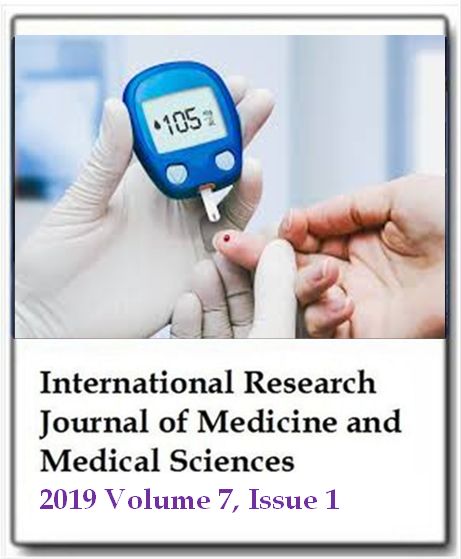Perception and practice of Ramadan fasting among patients with type I diabetes mellitus in the view of the practical guidelines
Inass Taha, Intessar Sultan, Abdullah Al-Harby, Randa Alharizi and Lama GhandouraInternational Research Journal of Medicine and Medical Sciences
Published: February 4 2019
Volume 7, Issue 1
Pages 21-27
DOl: https://doi.org/10.30918/IRJMMS.71.18.070
Abstract
Many type 1 diabetes patients (T1DM) choose to fast during Ramadan despite having an increased risk according to guidelines. Their fasting perception and practice need to be explored. The objective of this study is to examine the fasting perception and practice among T1DM patients in relation to their risk categories, metabolic conditions and in the view of practical guidelines. This cross sectional study included 113 adolescent and young Saudis with T1DM on basal bolus regimen from the diabetic center in Madinah. Data on fasting perception and practice were collected from patients 2 weeks after the end of Ramadan 2017 together with reviewing medical records. Risk categorization was performed according to Diabetes and Ramadan (DAR) 2016. The very high risk group included 78.8%. Fasting was safe by 85.5%, obligatory by 67.8%, exempted by 2.5%, and not indicated for pregnant by 6.8%. Compensation for non-fasting days was obligatory by 81.4% with 16.8% used to fast extra days outside Ramadan. Among the 113 patients, 86.7% experienced fasting (70.8% full fasters) with no significant difference in risk categories. Some patients followed the recommendations during fasting (proper meals in 26.5% at sunset , 73.5% at pre-dawn, 72.4% decreased activity, 60.1% increased fluid intake, 75.5% had inverted sleep pattern, 37.8% decreased insulin doses, 75.5% performed regular SMBG and 5.1% had professional supervision). Severe complications were 5.1% DKA and 1% severe hypoglycemia. Significant predictors for non-fasting were adolescence (p=0.036), recurrent hypoglycemia (p=0.013), harm perception (p=0.006), non-compensation (p=0.000) and comorbidities (p=0.039). In conclusion, most T1DM patients chose to fast during Ramadan without adequate support or following strict guidelines. Most of them do not experience any adversities and if they break fasting (mostly due to hypoglycemia), they are able to compensate later. Adolescent patients with harm perception, recurrent hypoglycemia, and no tendency to compensate for non-fasting showed less positive attitude towards fasting. More specific guidelines, education, and professional supervision are needed for these patients during Ramadan.
Keywords: Perception, practice, type 1 diabetes, Ramadan fasting, compensation.
Full Text PDFThis article is published under the terms of the Creative Commons Attribution License 4.0

